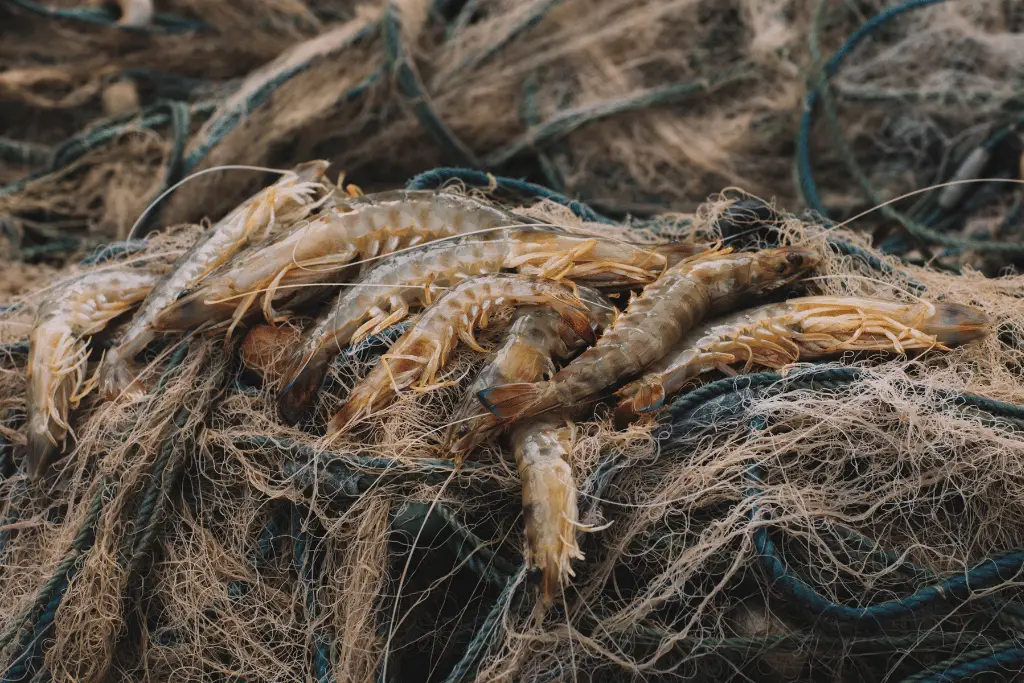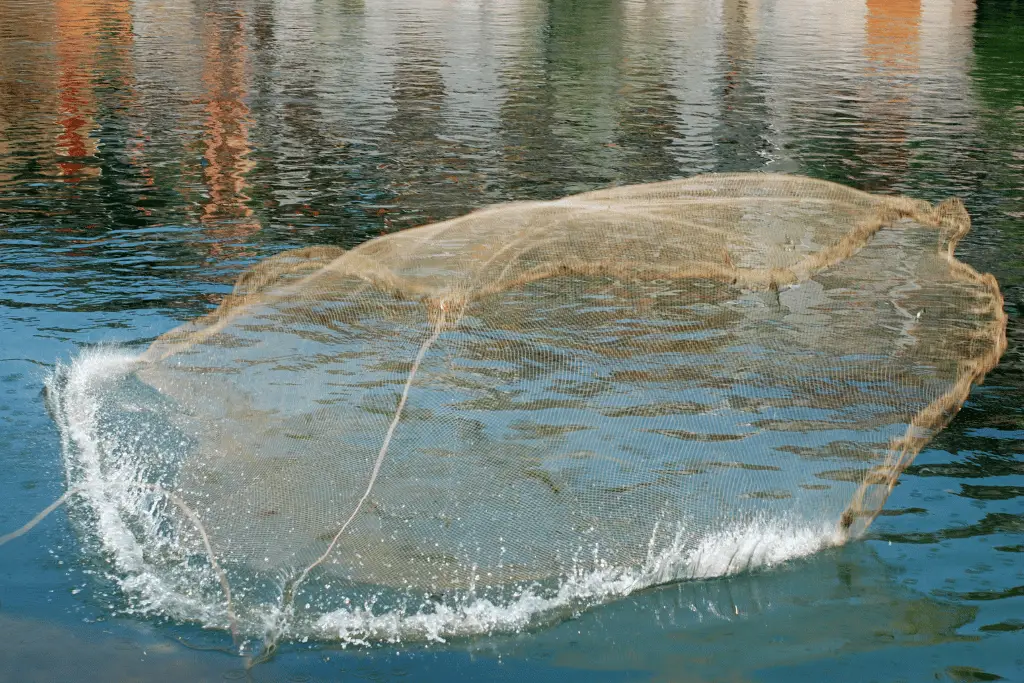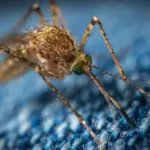
Embarking on a moonlit adventure along the coastal waters, cast net in hand, is a pursuit that conjures a unique blend of anticipation and tranquility for avid shrimpers. The rhythmic dance of the waves, the crisp sea breeze, and the promise of a bountiful catch under the canvas of the night sky create an experience like no other. Yet, in this pursuit, timing proves to be more than just a notion—it’s the key to unlocking the secrets of successful shrimping.
As we delve into the art of catching shrimp with a cast net, we uncover the subtle nuances that separate an ordinary outing from an extraordinary one. From understanding the nocturnal habits of these elusive crustaceans to navigating the intricacies of tidal influences and seasonal changes, the journey of a shrimper is one of both skill and observation. Join us as we explore the best times to cast your net, deciphering the language of shrimp behavior and fine-tuning your approach to align with the ebb and flow of the coastal world. In the following pages, we’ll unravel the mysteries of shrimping, one tide at a time.
Understanding Shrimp Behavior
Shrimps, those elusive and agile crustaceans, follow distinct behavioral patterns influenced by various environmental factors. To become a successful shrimper, it’s essential to delve into their habits and leverage this knowledge to optimize your cast netting endeavors.
A. Nocturnal Habits
- Shrimp Activity During the Night: Shrimps are predominantly nocturnal creatures, exhibiting heightened activity during the cover of darkness. The night provides them with a sense of security, allowing them to venture out of their hiding spots in search of food. As a shrimper, embracing the night can significantly enhance your chances of a bountiful catch.
- Utilizing Artificial Lights for Night Shrimping: Artificial lights serve as invaluable tools for night shrimping. Shrimps are attracted to light, and anglers commonly use powerful spotlights to illuminate the water. This not only draws the shrimp closer but also provides better visibility for casting your net. Experimenting with different light sources and intensities can help you find the optimal setup for your night shrimping excursions.
B. Tidal Influences
- Impact of Tides on Shrimp Movement: Tides play a crucial role in shaping shrimp behavior. Shrimps often follow the ebb and flow of the tide, moving with the water to find optimal feeding grounds. Understanding tidal movements is key to predicting where shrimp are likely to gather, increasing your chances of a successful catch.
- Planning Your Shrimping Expedition Around Tidal Changes: To capitalize on tidal influences, plan your shrimping trips around key tidal changes. Both incoming and outgoing tides create movement in the water, stimulating shrimp activity. Consider consulting tide charts specific to your location and schedule your outings during periods of significant tidal movement for an enhanced shrimping experience.
Seasonal Considerations

As the seasons change, so do the conditions for shrimping. Understanding the nuances of each season can make the difference between a successful haul and a quiet night by the water. Let’s explore the seasonal considerations that can guide your shrimping adventures throughout the year.
A. Springtime Bounty
- Warmer Waters and Increased Shrimp Activity: Spring heralds a rise in water temperatures, awakening shrimp from their winter slumber. Warmer waters stimulate their metabolism, leading to increased activity. During spring, shrimps are more likely to venture into shallower areas, providing a prime opportunity for cast netters. Targeting these areas during the spring months can yield a more abundant catch.
- Ideal Locations During Spring: As temperatures rise, coastal areas, estuaries, and marshes become hotspots for shrimp activity. Shallow waters adjacent to these habitats serve as ideal grounds for casting your net. Keep an eye on temperature trends and focus your efforts on areas where the water is warming, creating a hospitable environment for active shrimp.
B. Summer Nights
- Balancing Warm Temperatures with Shrimping Success: While summer nights offer warm and inviting conditions for shrimping, the challenge lies in the potential for crowded coastal areas. Balancing the appeal of comfortable weather with the competition from fellow shrimpers requires strategic planning. Consider exploring less frequented spots or adjusting your schedule to avoid peak shrimping hours.
- Navigating Busy Coastal Areas During Summer: Popular coastal areas can become bustling with shrimping enthusiasts during the summer months. To maximize your chances, arrive early or stay late when the competition subsides. Additionally, exploring less mainstream locations or consulting with local fishermen can reveal hidden gems for a more secluded and fruitful shrimping experience.
Weather Patterns
Weather plays a pivotal role in the success of a shrimping expedition. Understanding how different weather conditions impact shrimp behavior and adapting your approach accordingly can make the difference between a memorable catch and a disappointing outing. Let’s explore the intricacies of weather patterns in the world of shrimping.
A. Rainy Days and Shrimp Hunting
- Effect of Rain on Shrimp Behavior: Rainy days can significantly influence shrimp behavior. While some shrimpers may opt to stay indoors during light rain, experienced anglers know that rain can stimulate shrimp activity. Raindrops hitting the water’s surface create vibrations that mimic natural disturbances, enticing shrimps to become more active and venture out of their hiding spots.
- Strategies for Shrimping in the Rain: Shrimping in the rain requires a few adjustments to your usual routine. Consider using a waterproof light source to maintain visibility during the downpour. Additionally, casting your net near structures like docks or vegetation can provide shelter for shrimp, increasing your chances of a successful catch even in inclement weather.
B. Windy Conditions
- The Impact of Wind on Casting Accuracy: Wind can be a shrimper’s ally or adversary, depending on how it’s harnessed. While a gentle breeze can help carry the scent of your bait and attract shrimp, strong winds can pose challenges to casting accuracy. Practice adjusting your casting technique to accommodate windy conditions, ensuring that your net lands where the shrimp are most active.
- Adjusting Your Approach During Windy Days: On windy days, focus on areas where the wind is blowing against the tide. This creates a natural current that carries bait and shrimp in the same direction, increasing the likelihood of a successful catch. Additionally, using heavier sinkers on your net can help counteract the effects of strong winds, allowing for more controlled and accurate casts.
The Art of Observation
In the realm of shrimping, success often hinges on the ability to keenly observe the surroundings and decipher the subtle cues that signal the presence of these elusive crustaceans. Sharpening your observational skills is a key aspect of becoming a proficient shrimper. Let’s delve into the art of observation and how it can significantly enhance your chances of a successful catch.
A. Reading the Water
- Identifying Shrimp Hotspots: Successful shrimping begins with identifying the right locations. Observing the water’s surface can reveal important clues about where shrimp are likely to congregate. Look for areas with ripples, disturbances, or signs of baitfish, as these indicate potential shrimp activity. Mangroves, oyster beds, and seagrass beds are also prime locations, providing shelter and food sources for shrimp.
- Factors to Consider When Selecting a Casting Location: Consider the depth of the water, the presence of underwater structures, and the proximity to channels or drop-offs. Shrimps often navigate these features, making them strategic points for casting your net. Experiment with different locations during each outing and take note of where you have the most success, refining your choices based on seasonal and weather considerations.
B. Noticing Shrimp Signs
- Ripples, Jumping, and Other Indicators of Shrimp Presence: Shrimps are known for creating distinctive ripples as they move through the water. Keep a close eye on any disturbances, as they can indicate the presence of shrimp just beneath the surface. Additionally, watch for shrimp jumping out of the water, a behavior often associated with feeding or evading predators. These visual cues can guide your casting efforts for a more precise and fruitful catch.
- Fine-Tuning Your Observational Skills: Successful shrimping requires a patient and attentive approach. Take the time to familiarize yourself with the unique patterns of movement and behavior exhibited by shrimp in different conditions. By honing your ability to notice even the smallest details, you’ll develop a more intuitive understanding of where and when to cast your net for optimal results.
Time of Day Matters

In the world of shrimping, timing is everything. The hour of the day can profoundly influence the behavior of shrimp, dictating when they are most active and receptive to your casting efforts. Understanding the nuances of different times of the day is crucial for optimizing your shrimping experience. Let’s explore the significance of timing in the art of shrimping.
A. Early Bird Catches the Shrimp
- Dawn Advantages for Shrimping: The early morning hours, particularly during dawn, offer unique advantages for shrimping enthusiasts. Shrimps are often more active during the cooler hours of the morning, and the soft light of dawn provides excellent visibility for both shrimpers and the shrimp. Heading out at first light allows you to capitalize on their increased activity and optimize your chances of a successful catch.
- Tips for Maximizing the Morning Shrimping Experience: To make the most of the morning shrimping hours, plan your outings to coincide with sunrise. This not only provides favorable lighting conditions but also minimizes competition from other anglers who may arrive later in the day. Additionally, focus your efforts on shallower waters where shrimp are more likely to be actively foraging during these early hours.
B. Late-Night Adventures
- The Allure of Midnight Shrimping: Shrimping under the cover of darkness can be a highly rewarding endeavor. Many shrimp species are nocturnal, meaning they are most active during the night. While late-night shrimping may require additional preparation and safety precautions, the potential for a fruitful catch is often higher as shrimp venture out from their hiding spots under the veil of darkness.
- Safety Considerations for Late-Night Expeditions: When embarking on late-night shrimping adventures, prioritize safety. Ensure you have proper lighting to navigate safely, and familiarize yourself with the area during daylight hours before attempting a night-time expedition. Inform someone about your plans and location, and consider bringing a fellow enthusiast to share the experience while enhancing safety.
Legal and Environmental Considerations
While the thrill of catching shrimp with a cast net is undoubtedly enticing, responsible shrimping involves adhering to legal regulations and adopting environmentally sustainable practices. To ensure the longevity of this cherished pastime, it’s essential for shrimpers to be aware of and abide by local guidelines. Let’s explore the legal and environmental considerations that contribute to ethical and sustainable shrimping.
A. Familiarizing with Local Regulations
- Size and Catch Limits: Different regions have specific regulations governing the size and quantity of shrimp that can be legally caught. It’s crucial for shrimpers to be aware of these limitations to prevent overfishing and contribute to the conservation of shrimp populations. Check with local fisheries authorities or consult fishing guides for up-to-date information on size restrictions and catch limits.
- Licensing Requirements: Many areas require shrimpers to obtain a fishing license before casting their nets. Securing the appropriate license not only ensures compliance with local laws but also supports conservation efforts through licensing fees. Before embarking on a shrimping expedition, research and acquire the necessary permits to enjoy this activity responsibly.
B. Practicing Sustainable Shrimping
- Minimizing Environmental Impact: Shrimping can have ecological consequences if not conducted responsibly. Avoid disturbing sensitive habitats like seagrass beds and refrain from damaging underwater structures. Be mindful of the environment by minimizing trash and litter, leaving the area as pristine as you found it.
- Supporting Shrimp Populations for Future Harvests: Sustainable shrimping involves considering the long-term health of shrimp populations. Be selective in your catch, releasing undersized or egg-bearing shrimp to ensure the reproductive cycle continues. By actively participating in the conservation of shrimp habitats, you contribute to the preservation of this valuable resource for future generations of shrimpers.

Conclusion
As the curtain falls on our exploration into the world of shrimping, it’s evident that this endeavor is not just a pastime—it’s a dance with nature. From the quiet moments of predawn anticipation to the mysterious allure of midnight shrimping, each outing offers a chance to connect with the coastal environment in a deeply immersive way.
Yet, in our pursuit of the elusive shrimp, we must remain mindful stewards of the ecosystems that cradle these marine treasures. Legal adherence and environmental responsibility are not mere formalities; they are the threads that weave the sustainability of this cherished tradition. By respecting catch limits, securing the necessary permits, and embracing sustainable practices, we ensure that the thrill of shrimping endures for generations to come.
So, whether you’re drawn to the early light of dawn or enticed by the mysteries of the night, remember that every cast of the net is an invitation to witness nature’s dance. As you navigate the coastal waters in pursuit of shrimp, may your adventures be plentiful, your observations keen, and your appreciation for the delicate balance of the marine world everlasting. Happy shrimping!






